You are using an out of date browser. It may not display this or other websites correctly.
You should upgrade or use an alternative browser.
You should upgrade or use an alternative browser.
NASA InSight Mars Lander
- Thread starter Grey Havoc
- Start date
- Joined
- 21 January 2015
- Messages
- 12,150
- Reaction score
- 16,351
Members of the InSight mission team are using a break in spacecraft operations to study new ways to get one of the spacecraft’s key instruments to resume burrowing into the Martian surface.
Scientists and engineers involved with InSight’s Heat Flow and Physical Properties Package instrument have been working for the last several months to get the instrument’s probe, or “mole,” to start moving into the surface again. The mole, intended to hammer to a depth of five meters below the surface, stopped in early March only about 30 centimeters below the surface.

InSight mission seeking new ways to fix heat flow probe
Members of the InSight mission team are using a break in spacecraft operations to study new ways to get one of the spacecraft’s key instruments to resume burrowing into the Martian surface.
 spacenews.com
spacenews.com
FighterJock
ACCESS: Above Top Secret
- Joined
- 29 October 2007
- Messages
- 5,607
- Reaction score
- 5,933
They should try to move the position of the mole with the arm. I think that NASA were unlucky with the choice of where the Mole started to dig and hit the rock.
- Joined
- 21 January 2015
- Messages
- 12,150
- Reaction score
- 16,351
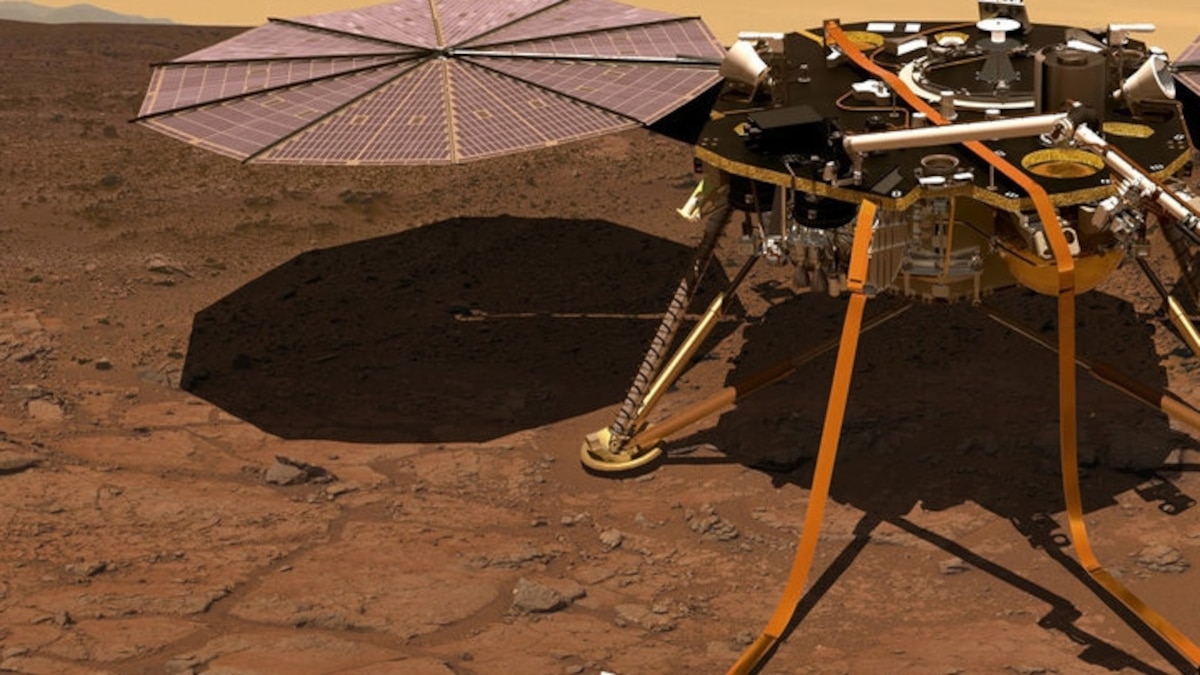
Mysterious magnetic pulses discovered on Mars
The nighttime events are among initial results from the InSight lander, which also found hints that the red planet may host a global reservoir of liquid water deep below the surface.
- Joined
- 21 January 2015
- Messages
- 12,150
- Reaction score
- 16,351
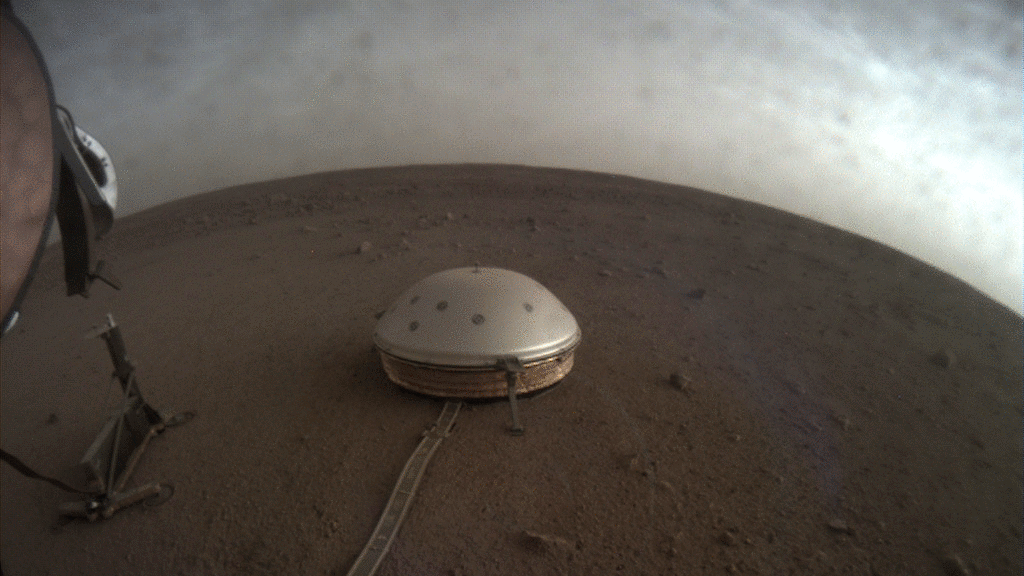
NASA's InSight 'Hears' Peculiar Sounds on Mars - NASA
Put an ear to the ground on Mars and you’ll be rewarded with a symphony of sounds. Granted, you’ll need superhuman hearing, but NASA’s InSight lander comes
- Joined
- 21 January 2015
- Messages
- 12,150
- Reaction score
- 16,351
Mars InSight's 'Mole' Is Moving Again
NASA's InSight spacecraft has used its robotic arm to help its heat probe, known as "the mole," dig nearly 2 centimeters (3/4 of an inch) over the past week. While modest, the movement is significant: Designed to dig as much as 16 feet (5 meters) underground to gauge the heat escaping from the planet's interior, the mole has only managed to partially bury itself since it started hammering in February 2019.
The recent movement is the result of a new strategy, arrived at after extensive testing on Earth, which found that unexpectedly strong soil is holding up the mole's progress. The mole needs friction from surrounding soil in order to move: Without it, recoil from its self-hammering action will cause it to simply bounce in place. Pressing the scoop on InSight's robotic arm against the mole, a new technique called "pinning," appears to provide the probe with the friction it needs to continue digging.
Since Oct. 8, 2019, the mole has hammered 220 times over three separate occasions. Images sent down from the spacecraft's cameras have shown the mole gradually progressing into the ground. It will take more time - and hammering - for the team to see how far the mole can go.
The mole is part of an instrument called the Heat Flow and Physical Properties Package, or HP3, which was provided by the German Aerospace Center (DLR).
"Seeing the mole's progress seems to indicate that there's no rock blocking our path," said HP3Principal Investigator Tilman Spohn of DLR. "That's great news! We're rooting for our mole to keep going."
NASA's Jet Propulsion Laboratory in Pasadena, California, leads the InSight mission. JPL has tested the robotic arm's movement using full-scale replicas of InSight and the mole. Engineers continue to test what would happen if the mole were to sink beneath the reach of the robotic arm. If it stops making progress, they might scrape soil on top of the mole, adding mass to resist the mole's recoil.
If no other options exist, they would consider pressing the scoop down directly on the top of the mole while trying to avoid the sensitive tether there; the tether provides power to and relays data from the instrument.
"The mole still has a way to go, but we're all thrilled to see it digging again," said Troy Hudson of JPL, an engineer and scientist who has led the mole recovery effort. "When we first encountered this problem, it was crushing. But I thought, 'Maybe there's a chance; let's keep pressing on.' And right now, I'm feeling giddy."
About InSight
JPL manages InSight for NASA's Science Mission Directorate. InSight is part of NASA's Discovery Program, managed by the agency's Marshall Space Flight Center in Huntsville, Alabama. Lockheed Martin Space in Denver built the InSight spacecraft, including its cruise stage and lander, and supports spacecraft operations for the mission.
A number of European partners, including France's Centre National d'Études Spatiales (CNES) and the German Aerospace Center (DLR), are supporting the InSight mission. CNES provided the Seismic Experiment for Interior Structure (SEIS) instrument to NASA, with the principal investigator at IPGP (Institut de Physique du Globe de Paris). Significant contributions for SEIS came from IPGP; the Max Planck Institute for Solar System Research (MPS) in Germany; the Swiss Federal Institute of Technology (ETH Zurich) in Switzerland; Imperial College London and Oxford University in the United Kingdom; and JPL. DLR provided the Heat Flow and Physical Properties Package (HP3) instrument, with significant contributions from the Space Research Center (CBK) of the Polish Academy of Sciences and Astronika in Poland. Spain's Centro de Astrobiología (CAB) supplied the temperature and wind sensors.
More about InSight:
mars.nasa.gov/insight/
www.nasa.gov/insight/
NASA's InSight spacecraft has used its robotic arm to help its heat probe, known as "the mole," dig nearly 2 centimeters (3/4 of an inch) over the past week. While modest, the movement is significant: Designed to dig as much as 16 feet (5 meters) underground to gauge the heat escaping from the planet's interior, the mole has only managed to partially bury itself since it started hammering in February 2019.
The recent movement is the result of a new strategy, arrived at after extensive testing on Earth, which found that unexpectedly strong soil is holding up the mole's progress. The mole needs friction from surrounding soil in order to move: Without it, recoil from its self-hammering action will cause it to simply bounce in place. Pressing the scoop on InSight's robotic arm against the mole, a new technique called "pinning," appears to provide the probe with the friction it needs to continue digging.
Since Oct. 8, 2019, the mole has hammered 220 times over three separate occasions. Images sent down from the spacecraft's cameras have shown the mole gradually progressing into the ground. It will take more time - and hammering - for the team to see how far the mole can go.
The mole is part of an instrument called the Heat Flow and Physical Properties Package, or HP3, which was provided by the German Aerospace Center (DLR).
"Seeing the mole's progress seems to indicate that there's no rock blocking our path," said HP3Principal Investigator Tilman Spohn of DLR. "That's great news! We're rooting for our mole to keep going."
NASA's Jet Propulsion Laboratory in Pasadena, California, leads the InSight mission. JPL has tested the robotic arm's movement using full-scale replicas of InSight and the mole. Engineers continue to test what would happen if the mole were to sink beneath the reach of the robotic arm. If it stops making progress, they might scrape soil on top of the mole, adding mass to resist the mole's recoil.
If no other options exist, they would consider pressing the scoop down directly on the top of the mole while trying to avoid the sensitive tether there; the tether provides power to and relays data from the instrument.
"The mole still has a way to go, but we're all thrilled to see it digging again," said Troy Hudson of JPL, an engineer and scientist who has led the mole recovery effort. "When we first encountered this problem, it was crushing. But I thought, 'Maybe there's a chance; let's keep pressing on.' And right now, I'm feeling giddy."
About InSight
JPL manages InSight for NASA's Science Mission Directorate. InSight is part of NASA's Discovery Program, managed by the agency's Marshall Space Flight Center in Huntsville, Alabama. Lockheed Martin Space in Denver built the InSight spacecraft, including its cruise stage and lander, and supports spacecraft operations for the mission.
A number of European partners, including France's Centre National d'Études Spatiales (CNES) and the German Aerospace Center (DLR), are supporting the InSight mission. CNES provided the Seismic Experiment for Interior Structure (SEIS) instrument to NASA, with the principal investigator at IPGP (Institut de Physique du Globe de Paris). Significant contributions for SEIS came from IPGP; the Max Planck Institute for Solar System Research (MPS) in Germany; the Swiss Federal Institute of Technology (ETH Zurich) in Switzerland; Imperial College London and Oxford University in the United Kingdom; and JPL. DLR provided the Heat Flow and Physical Properties Package (HP3) instrument, with significant contributions from the Space Research Center (CBK) of the Polish Academy of Sciences and Astronika in Poland. Spain's Centro de Astrobiología (CAB) supplied the temperature and wind sensors.
More about InSight:
mars.nasa.gov/insight/
www.nasa.gov/insight/
- Joined
- 21 January 2015
- Messages
- 12,150
- Reaction score
- 16,351
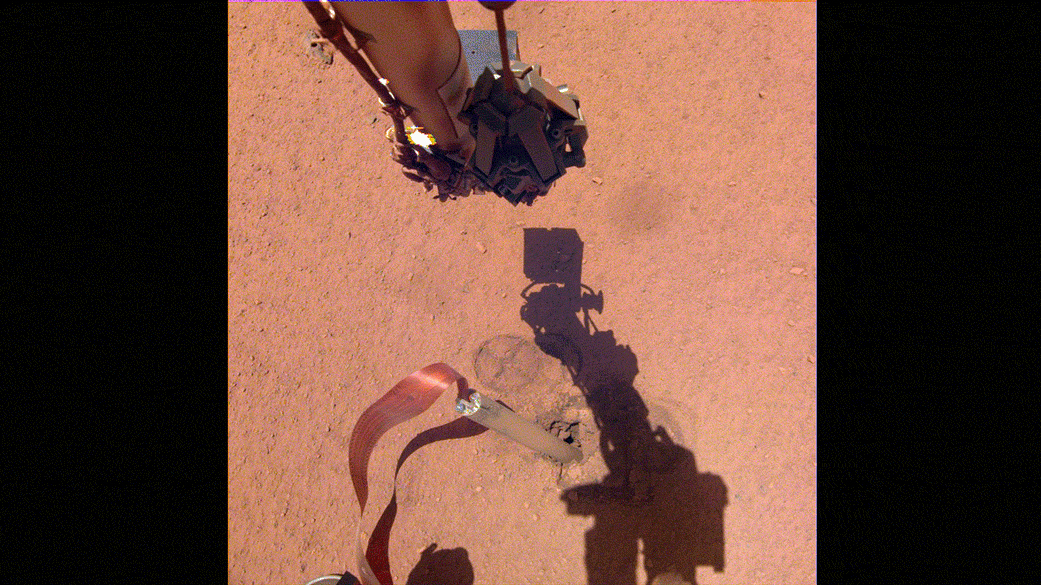
Mars InSight's 'Mole' Team Peers Into the Pit - NASA
The InSight team continues to assess the heat probe this week. Having determined the lander’s robotic arm wasn’t holding the mole in place, they retracted the
FighterJock
ACCESS: Above Top Secret
- Joined
- 29 October 2007
- Messages
- 5,607
- Reaction score
- 5,933

Mars InSight's 'Mole' Team Peers Into the Pit - NASA
The InSight team continues to assess the heat probe this week. Having determined the lander’s robotic arm wasn’t holding the mole in place, they retracted thewww.nasa.gov
I hope that the arm on InSight can be used to pull the Mole all the way up out of the hole and place the Mole away from the area that had the rock.
- Joined
- 21 January 2015
- Messages
- 12,150
- Reaction score
- 16,351
- Joined
- 21 January 2015
- Messages
- 12,150
- Reaction score
- 16,351
- Joined
- 21 January 2015
- Messages
- 12,150
- Reaction score
- 16,351
- Joined
- 21 January 2015
- Messages
- 12,150
- Reaction score
- 16,351
- Joined
- 21 January 2015
- Messages
- 12,150
- Reaction score
- 16,351
- Joined
- 9 October 2009
- Messages
- 21,973
- Reaction score
- 13,622
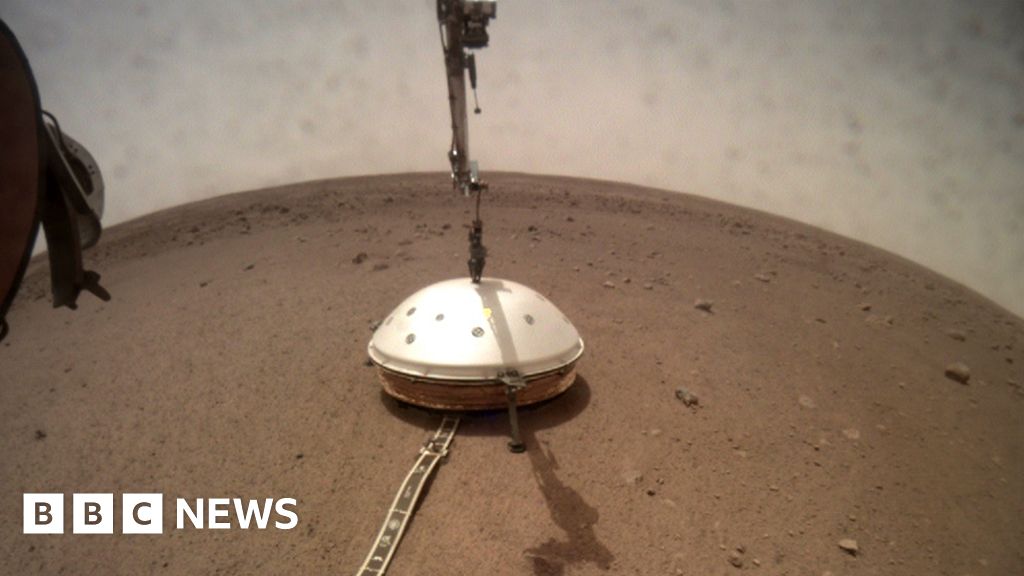
Nasa's InSight probe senses hundreds of 'Marsquakes'
The US space agency's InSight probe detects over 450 significant seismic events since landing in 2018.
FighterJock
ACCESS: Above Top Secret
- Joined
- 29 October 2007
- Messages
- 5,607
- Reaction score
- 5,933

Nasa's InSight probe senses hundreds of 'Marsquakes'
The US space agency's InSight probe detects over 450 significant seismic events since landing in 2018.www.bbc.com
Looks like Mars is not Geologically quiet as some people would believe. Don't know if that means that Mars's inner core is still active or there is some other forces at work that need further investigation.
- Joined
- 9 October 2009
- Messages
- 21,973
- Reaction score
- 13,622
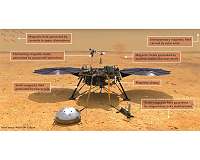
Magnetic field at Martian surface ten times stronger than expected
Vancouver, Canada (SPX) Feb 25, 2020 - New data gleaned from the magnetic sensor aboard NASA's InSight spacecraft is offering an unprecedented close-up of magnetic fields on Mars. In a study published in Nature Geoscience, scientis
www.marsdaily.com
- Joined
- 9 October 2009
- Messages
- 21,973
- Reaction score
- 13,622
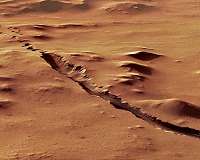
Seismic activity on Mars resembles that found in the Swabian Jura
Cologne, Germany (SPX) Feb 25, 2020 - Mars is a seismically active planet - quakes occur several times a day. Although they are not particularly strong, they are easily measurable during the quiet evening hours. This is one of many resu
www.marsdaily.com
- Joined
- 21 January 2015
- Messages
- 12,150
- Reaction score
- 16,351
Latest update from DLR to recover the Mole:


The InSight mission logbook (February 2019 - July 2020)
In his logbook, HP3 Instrument Lead Tilman Spohn gives us the latest updates regarding the InSight mission and our HP3 instrument - the 'Mole' - which will hammer into the Martian surface.
www.dlr.de
- Joined
- 21 January 2015
- Messages
- 12,150
- Reaction score
- 16,351

There's a Lot More Happening Inside Mars Than We Knew
Scientists have published a treasure trove of new research from the InSight lander’s first year on Mars, showing just how active the Red Planet really is.
- Joined
- 9 October 2009
- Messages
- 21,973
- Reaction score
- 13,622
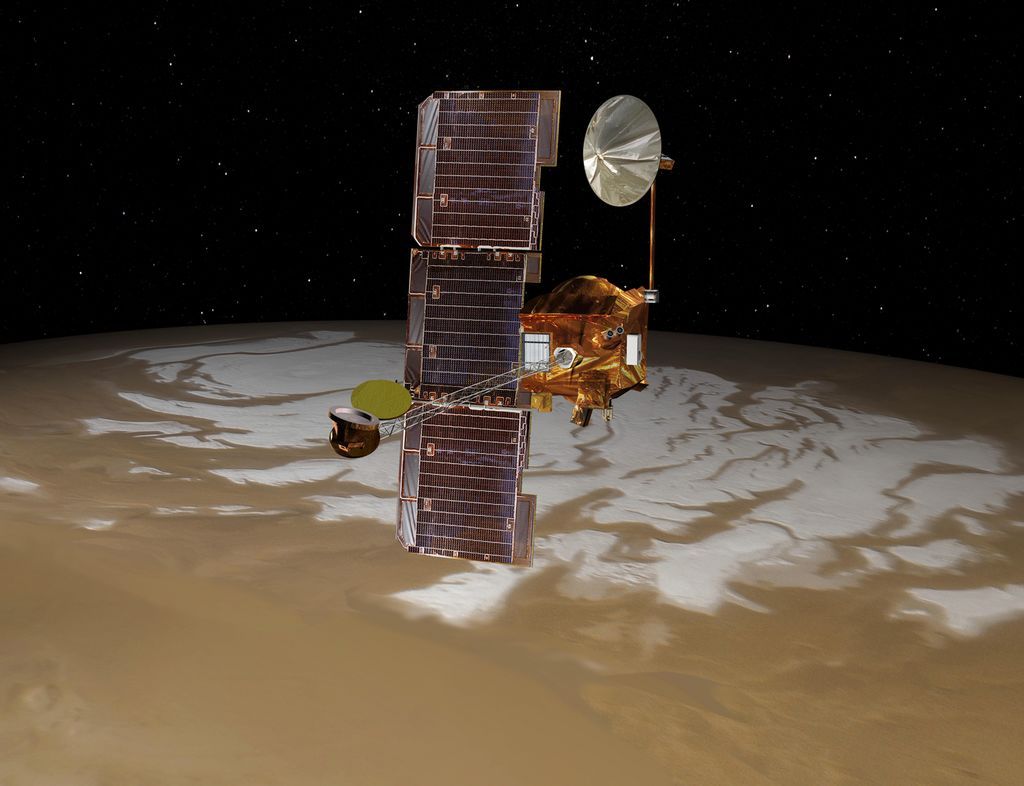
Is the end near for Mars Odyssey? Trump's proposed 2021 budget could doom long-lived mission
The new budget request includes a massive cut to Mars Odyssey that effectively ends its mission.
FighterJock
ACCESS: Above Top Secret
- Joined
- 29 October 2007
- Messages
- 5,607
- Reaction score
- 5,933

Is the end near for Mars Odyssey? Trump's proposed 2021 budget could doom long-lived mission
The new budget request includes a massive cut to Mars Odyssey that effectively ends its mission.www.space.com
Going to miss Mars Odyssey, though I still have Mars Reconnaissance Orbiter to follow.
- Joined
- 21 January 2015
- Messages
- 12,150
- Reaction score
- 16,351

The InSight mission logbook (February 2019 - July 2020)
In his logbook, HP3 Instrument Lead Tilman Spohn gives us the latest updates regarding the InSight mission and our HP3 instrument - the 'Mole' - which will hammer into the Martian surface.
www.dlr.de
FighterJock
ACCESS: Above Top Secret
- Joined
- 29 October 2007
- Messages
- 5,607
- Reaction score
- 5,933

The InSight mission logbook (February 2019 - July 2020)
In his logbook, HP3 Instrument Lead Tilman Spohn gives us the latest updates regarding the InSight mission and our HP3 instrument - the 'Mole' - which will hammer into the Martian surface.www.dlr.de
According to the above article it now looks like there was not a stone below where the Mole was digging down, so it must have been another problem that caused the Mole to stop working. This mystery gets stranger and stranger.
- Joined
- 21 January 2015
- Messages
- 12,150
- Reaction score
- 16,351
- Joined
- 21 January 2015
- Messages
- 12,150
- Reaction score
- 16,351

The InSight mission logbook
Tilman Spohn, Principal Investigator of the HP3 instrument on the InSight mission, has been providing us with regular updates on the 'Mole' since February 2019: what's happening on Mars right now? What's the weather like? How deep in the surface is the Mars 'Mole'?
FighterJock
ACCESS: Above Top Secret
- Joined
- 29 October 2007
- Messages
- 5,607
- Reaction score
- 5,933

The InSight mission logbook
Tilman Spohn, Principal Investigator of the HP3 instrument on the InSight mission, has been providing us with regular updates on the 'Mole' since February 2019: what's happening on Mars right now? What's the weather like? How deep in the surface is the Mars 'Mole'?www.dlr.de
Good news from Mars concerning the InSight Mole, it looks like the problem has now been solved and that the Mole is now below the surface. I cannot wait to see the first results from it whenever they are released.
- Joined
- 21 January 2015
- Messages
- 12,150
- Reaction score
- 16,351
- Joined
- 21 January 2015
- Messages
- 12,150
- Reaction score
- 16,351

The InSight mission logbook
Tilman Spohn, Principal Investigator of the HP3 instrument on the InSight mission, has been providing us with regular updates on the 'Mole' since February 2019: what's happening on Mars right now? What's the weather like? How deep in the surface is the Mars 'Mole'?
FighterJock
ACCESS: Above Top Secret
- Joined
- 29 October 2007
- Messages
- 5,607
- Reaction score
- 5,933

The InSight mission logbook
Tilman Spohn, Principal Investigator of the HP3 instrument on the InSight mission, has been providing us with regular updates on the 'Mole' since February 2019: what's happening on Mars right now? What's the weather like? How deep in the surface is the Mars 'Mole'?www.dlr.de
Thanks for posting the InSight mission logbook blog, highly interesting Flyaway.
- Joined
- 9 October 2009
- Messages
- 21,973
- Reaction score
- 13,622

Hell Yes, InSight’s Heat Probe Is Now Completely Buried on Mars
There’s some happy news to report from the Red Planet, as the stubborn Mars InSight heat probe, known as “the mole,” is now completely buried. It’s an
FighterJock
ACCESS: Above Top Secret
- Joined
- 29 October 2007
- Messages
- 5,607
- Reaction score
- 5,933

Hell Yes, InSight’s Heat Probe Is Now Completely Buried on Mars
There’s some happy news to report from the Red Planet, as the stubborn Mars InSight heat probe, known as “the mole,” is now completely buried. It’s angizmodo.com
Good news that the Mole is fully buried on Mars, I now cannot wait for the first science to be released.
- Joined
- 21 January 2015
- Messages
- 12,150
- Reaction score
- 16,351

NASA InSight's 'Mole' Is Out of Sight - NASA
Now that the heat probe is just below the Martian surface, InSight’s arm will scoop some additional soil on top to help it keep digging so it can take Mars’
- Joined
- 21 January 2015
- Messages
- 12,150
- Reaction score
- 16,351
Cross-posting this news.
Announcement of extended missions for Juno & InSight.
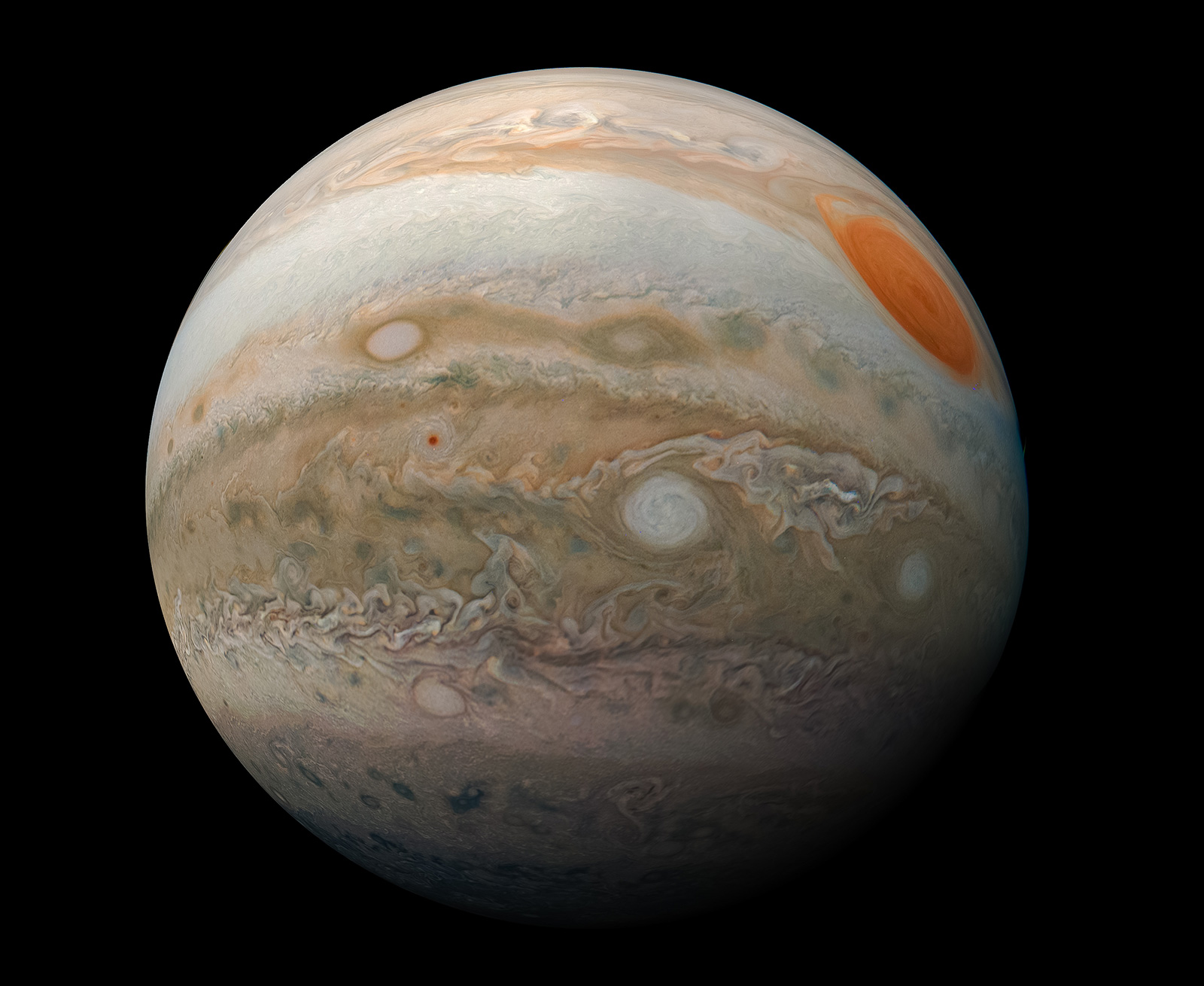
 mars.nasa.gov
mars.nasa.gov
Announcement of extended missions for Juno & InSight.

NASA Extends Exploration for Two Planetary Science Missions - NASA
As NASA prepares to send astronauts back to the Moon and on to Mars, the agency’s quest to seek answers about our solar system and beyond continues to inform
FighterJock
ACCESS: Above Top Secret
- Joined
- 29 October 2007
- Messages
- 5,607
- Reaction score
- 5,933
Cross-posting this news.
Announcement of extended missions for Juno & InSight.

NASA Extends Exploration for Two Planetary Science Missions - NASA
As NASA prepares to send astronauts back to the Moon and on to Mars, the agency’s quest to seek answers about our solar system and beyond continues to informmars.nasa.gov
Good news for InSight, I was wondering how long the InSight mission would last.
- Joined
- 21 January 2015
- Messages
- 12,150
- Reaction score
- 16,351
Unfortunately they’ve had to give up on their efforts to get the ‘mole’ buried any further under the surface of Mars.

 mars.nasa.gov
mars.nasa.gov

NASA InSight’s ‘Mole’ Ends Its Journey on Mars - NASA
The heat probe hasn’t been able to gain the friction it needs to dig, but the mission has been granted an extension to carry on with its other science.
FighterJock
ACCESS: Above Top Secret
- Joined
- 29 October 2007
- Messages
- 5,607
- Reaction score
- 5,933
Unfortunately they’ve had to give up on their efforts to get the ‘mole’ buried any further under the surface of Mars.

NASA InSight’s ‘Mole’ Ends Its Journey on Mars - NASA
The heat probe hasn’t been able to gain the friction it needs to dig, but the mission has been granted an extension to carry on with its other science.mars.nasa.gov
That is sad news about InSights Mole, but I am exited about what the extended mission may bring.
- Joined
- 21 January 2015
- Messages
- 12,150
- Reaction score
- 16,351

Mars Rumbles Raise Hopes of Underground Magma Flows
Small and cold, Mars has long been considered a dead planet. But a series of recent discoveries has forced scientists to rethink how recently its insides stopped churning — if they ever stopped at all.
- Joined
- 9 October 2009
- Messages
- 21,973
- Reaction score
- 13,622

NASA’s China exclusion could mean missed opportunity for Mars InSight
NASA’s Mars InSight lander is poised to make the ultimate field recording when Perseverance attempts its Feb. 18 landing. Politics could squelch an even better recording opportunity when Chin…
 spacenews.com
spacenews.com
Similar threads
-
-
-
-
-
NASA :successful test of Mars landing technologies
- Started by spacegirl
- Replies: 1
